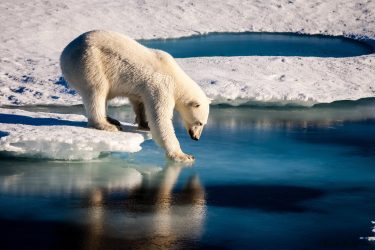
It’s no secret that Arctic sea ice is melting. Polar bears, the poster child for climate change, are among the animals most affected by the seasonal and year-to-year changes in Arctic sea ice, because they rely on this surface for essential activities such as hunting, traveling and breeding.
A new University of Washington study, with funding and satellite data from NASA, finds a trend toward earlier sea ice melt in the spring and later ice growth in the fall across all 19 polar bear populations, which can negatively impact the feeding and breeding capabilities of the bears. The paper, published Sept. 14 in The Cryosphere, is the first to quantify the sea ice changes in each polar bear subpopulation across the entire Arctic region using metrics that are specifically relevant to polar bear biology.
Read more at UW Today »
